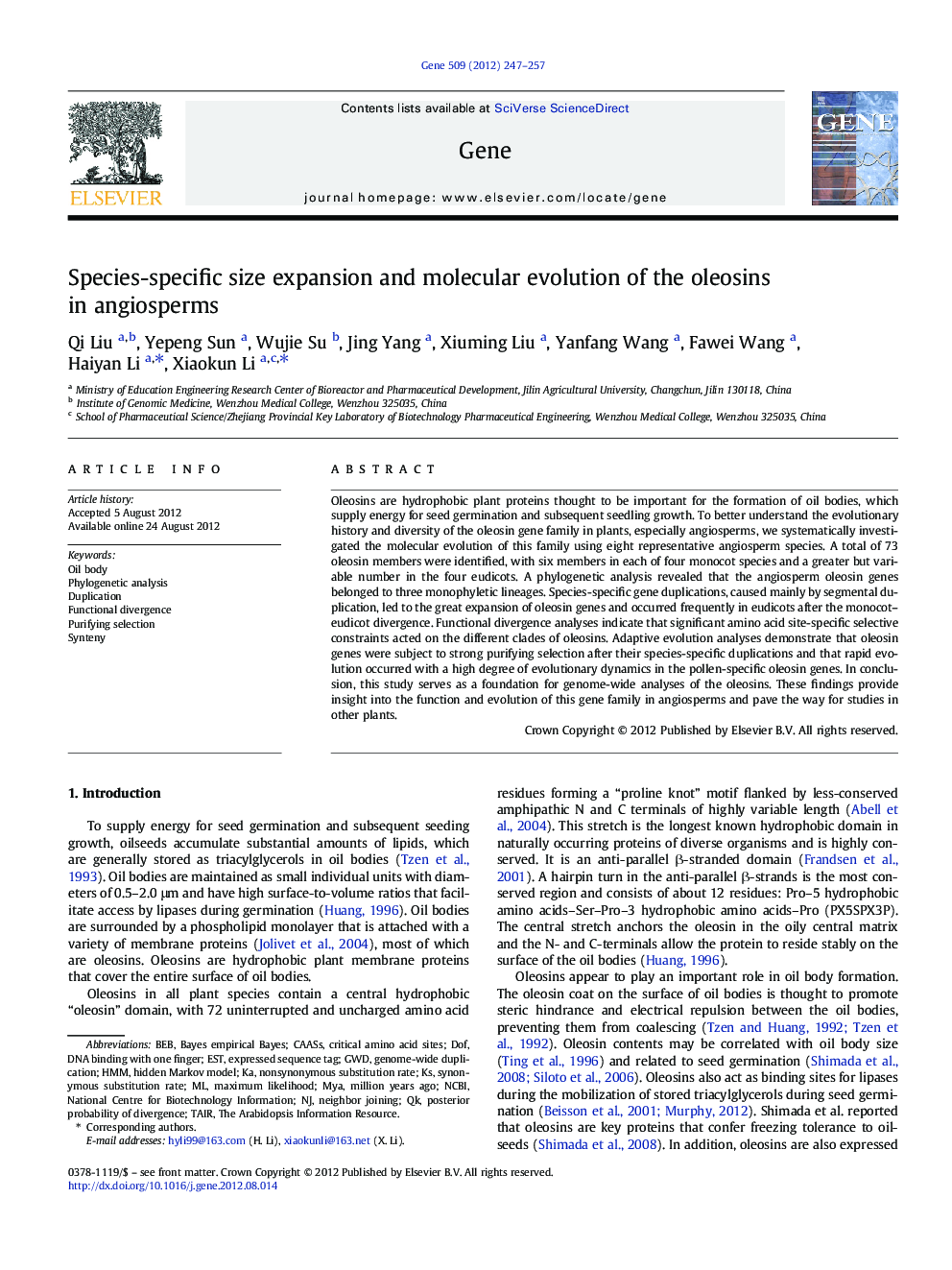| کد مقاله | کد نشریه | سال انتشار | مقاله انگلیسی | نسخه تمام متن |
|---|---|---|---|---|
| 5907206 | 1160003 | 2012 | 11 صفحه PDF | دانلود رایگان |

Oleosins are hydrophobic plant proteins thought to be important for the formation of oil bodies, which supply energy for seed germination and subsequent seedling growth. To better understand the evolutionary history and diversity of the oleosin gene family in plants, especially angiosperms, we systematically investigated the molecular evolution of this family using eight representative angiosperm species. A total of 73 oleosin members were identified, with six members in each of four monocot species and a greater but variable number in the four eudicots. A phylogenetic analysis revealed that the angiosperm oleosin genes belonged to three monophyletic lineages. Species-specific gene duplications, caused mainly by segmental duplication, led to the great expansion of oleosin genes and occurred frequently in eudicots after the monocot-eudicot divergence. Functional divergence analyses indicate that significant amino acid site-specific selective constraints acted on the different clades of oleosins. Adaptive evolution analyses demonstrate that oleosin genes were subject to strong purifying selection after their species-specific duplications and that rapid evolution occurred with a high degree of evolutionary dynamics in the pollen-specific oleosin genes. In conclusion, this study serves as a foundation for genome-wide analyses of the oleosins. These findings provide insight into the function and evolution of this gene family in angiosperms and pave the way for studies in other plants.
⺠73 Oleosin members can be divided into three monophylogenetic groups. ⺠Frequent species-specific gene duplication events have occurred in eudicots. ⺠Segmental duplication mainly contributed for species-specific gene duplications. ⺠Site-specific selective constraints acted on different monophylogenetic groups. ⺠Purifying selection was detected after the species-specific duplication.
Journal: Gene - Volume 509, Issue 2, 10 November 2012, Pages 247-257